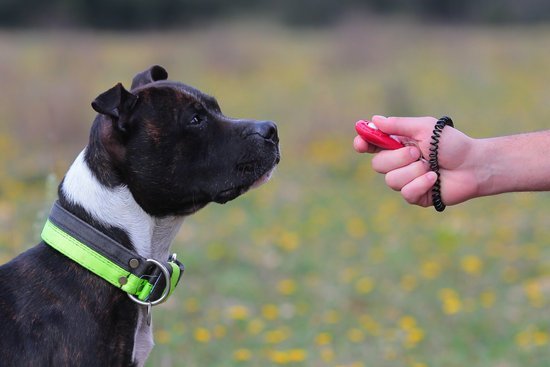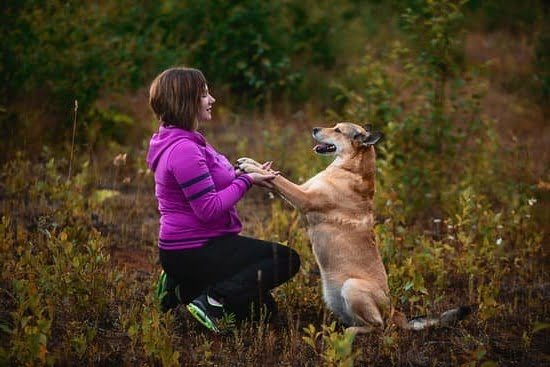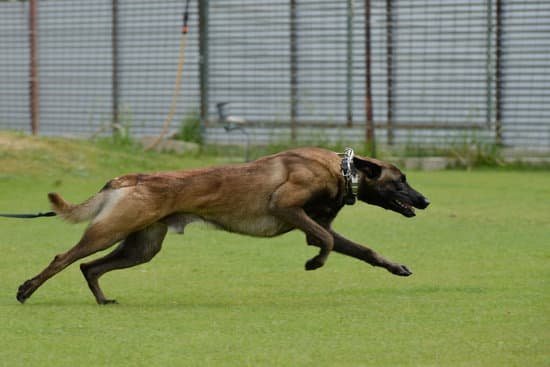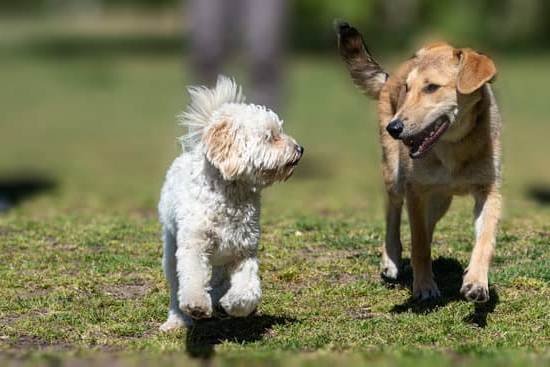Clicker training has become a popular and effective method for teaching dogs new behaviors and commands. In this article, we will explore the basics of clicker training and how it can be a successful tool in training your furry friend. From understanding the principles of clicker training to incorporating it into your daily routine, we will provide you with all the information you need to get started on clicker training your dog.
Before diving into the process of clicker training, it’s important to prepare for the journey ahead. Gathering the necessary tools and creating a conducive environment for training are essential steps in ensuring successful clicker training sessions with your dog. Additionally, choosing the right clicker is crucial in this process, as different types of clickers exist and finding the best one for your dog can make a significant difference in their learning experience.
In this guide, we will also delve into positive reinforcement techniques and problem-solving strategies when implementing clicker training with your dog. Whether you are teaching basic commands or advanced behaviors, using the clicker in combination with positive reinforcement can lead to more effective and enjoyable training sessions for both you and your pet. So, let’s get ready to embark on an exciting journey of clicker training with your canine companion.
Preparing for Clicker Training
Before starting clicker training with your dog, it is important to gather the necessary tools and create a conducive training environment. Clicker training requires a few essential items to ensure a smooth and successful training process. Here is a list of tools you will need to prepare for clicker training:
- Clicker: The clicker is a small handheld device that makes a distinct clicking sound when pressed. It serves as a marker to signal to your dog that they have performed the desired behavior.
- Treats: High-value treats are essential for reinforcing positive behavior during clicker training. It’s important to use treats that your dog finds particularly enticing and motivating.
- Training Mat or Area: Designate a specific area in your home or outdoors where you can conduct clicker training sessions with minimal distractions.
- Patience and Consistency: While not physical tools, patience and consistency are crucial for successful clicker training. You’ll need to be patient with your dog as they learn new commands and consistently reinforce positive behavior with the clicker and treats.
Creating a conducive training environment for your dog is also important for effective clicker training. Here are some tips for establishing an optimal setting for clicker training:
- Choose a quiet and familiar location where you can focus on the training session without interruptions.
- Avoid conducting training sessions during busy or high-energy times of the day, as this can lead to distractions and decreased focus from your dog.
- Remove any potential sources of distraction, such as toys or other pets, from the training area to help your dog stay focused on the task at hand.
By gathering the necessary tools and creating a conducive training environment, you can set the stage for successful clicker training with your dog.
Remember that every pet owner has different expectations pertaining to their pet’s behaviour so consider counseling when trying something new even if it seems basic like feeding or walking it.
Choosing the Right Clicker
When it comes to clicker training your dog, choosing the right clicker is essential for effective training. There are different types of clickers available in the market, each with its own unique features and benefits. Here is a guide on exploring the different types of clickers and how to select the best one for your dog:
Types of Clickers:
1. Traditional Clickers: These are the classic box-shaped clickers that produce a sharp, distinct sound when pressed. They are lightweight and easy to handle, making them a popular choice for many dog owners.
2. Clicker Apps: In this digital age, there are now clicker apps available for smartphones that simulate the sound of a traditional clicker. These apps offer convenience and versatility, allowing you to have a virtual clicker at your fingertips.
3. Multi-Function Clickers: Some clickers come with additional features such as a whistle or flashlight, providing extra utility beyond just training purposes.
Selecting the Best Clicker for Your Dog:
– Consider your dog’s sensitivity to sound: Some dogs may be sensitive to loud or sharp noises, so it’s important to choose a clicker with a sound level that is comfortable for your furry friend.
– Size and Comfort: If you have a small breed dog, consider choosing a smaller-sized clicker that fits comfortably in your hand for ease of use during training sessions.
– Durability: Look for a clicker that is sturdy and built to last through numerous training sessions with your dog.
By carefully considering these factors and experimenting with different types of clickers, you can select the best one that suits both you and your dog’s needs.
Overall, choosing the right clicker is an important aspect of setting up successful clicker training sessions with your dog. Finding the perfect fit will ensure that both you and your pet have an enjoyable experience during training sessions while effectively using positive reinforcement techniques in their learning process.
Teaching Basic Commands
Introduction to Basic Clicker Training
Clicker training is a popular and effective method for teaching dogs new commands and behaviors. It involves the use of a small, handheld device called a clicker, which produces a distinct clicking sound when pressed. This sound acts as a signal to communicate with the dog that they have performed the desired behavior correctly. Clicker training works by associating the sound of the clicker with positive reinforcement, usually in the form of treats or praise.
Step-by-Step Guide on Using the Clicker
To start clicker training your dog, you will first need to introduce them to the sound of the clicker and establish an association between the click and a reward. Begin by simply clicking the device and immediately giving your dog a treat. Repeat this several times until your dog starts to understand that the click means they will receive a reward.
Next, choose one basic command to work on, such as sit, stay, or come. When your dog performs the desired behavior, such as sitting down, immediately click the clicker and then give them a treat. It’s important to time the click precisely to mark the exact moment when your dog does what you want.
Repeat this process consistently, gradually reducing how often you give treats while still clicking each time your dog performs the correct behavior. Over time, your dog will learn to associate their actions with the sound of the clicker and will obey commands even without treats.
Benefits of Clicker Training
The benefits of using a clicker to train basic commands are numerous. Firstly, it provides clear communication between you and your dog, marking exactly when they perform the right behavior. This clarity eliminates confusion and helps reinforce learning.
Additionally, it allows for precise timing in rewarding good behavior, making it easier for dogs to understand what they are being rewarded for. Overall, using a clicker can help accelerate your dog’s learning process and improve their obedience in response to basic commands.
Positive Reinforcement Techniques
Positive reinforcement is a key component of clicker training for dogs. This technique involves rewarding your dog with praise, treats, or affection when they exhibit the desired behavior, which in turn increases the likelihood that they will repeat that behavior in the future. Understanding the importance of positive reinforcement in clicker training is essential for creating a strong bond with your dog and achieving successful training outcomes.
When implementing positive reinforcement techniques, it’s important to use high-value rewards that are particularly enticing for your dog. These can include small pieces of cooked chicken, cheese, or other favorite treats.
By using these rewards consistently and immediately after your dog performs the desired behavior, you are reinforcing that behavior and encouraging them to continue doing it. It’s also crucial to deliver the reward promptly after the click sound from the clicker to ensure clear communication with your dog.
In addition to treats, verbal praise and affection are also powerful forms of positive reinforcement. A simple “good boy” or “good girl” accompanied by a pat on the head or a belly rub can go a long way in reinforcing good behavior. This kind of positive interaction builds trust and strengthens the bond between you and your dog, making them more eager to participate in training sessions and learn new commands.
| Positive Reinforcement Techniques | Implementing Positive Reinforcement |
|---|---|
| Use high-value rewards such as treats | Deliver rewards promptly after the click sound from the clicker |
| Verbal praise and affection are powerful forms of positive reinforcement | This kind of interaction builds trust and strengthens bond between owner and dog |
Problem-Solving With Clicker Training
One common challenge when clicker training dogs is their inability to focus or pay attention during the training sessions. This can be addressed by choosing a quiet, distraction-free environment for training. Additionally, keeping the training sessions short and engaging can help maintain your dog’s focus. It’s also important to ensure that your dog is mentally and physically stimulated before the training session to increase their receptiveness to learning.
Another challenge that dog owners may encounter is their dog not responding to the clicker. In such cases, it may be helpful to revisit the basics of clicker introduction with your dog. Start by associating the sound of the clicker with positive reinforcement, such as giving treats or praise immediately after clicking. Consistency and patience are key in helping your dog understand the connection between the clicker and rewards.
Additionally, some dogs may display anxious or fearful behavior during clicker training. It’s important to approach these situations with sensitivity and consider seeking professional guidance if necessary. Building trust and confidence through gradual exposure and positive reinforcement can help alleviate your dog’s anxiety during training.
| Common Challenges | Troubleshooting Tips |
|---|---|
| Lack of focus during training | Choose a quiet environment for training, keep sessions short and engaging, ensure mental and physical stimulation |
| Dog not responding to the clicker | Revisit basics of clicker introduction, associate clicker sound with positive reinforcement consistently |
| Anxious or fearful behavior during training | Approach with sensitivity, seek professional guidance if needed, build trust through gradual exposure and positive reinforcement. |
Advanced Clicker Training
Teaching Advanced Commands
Once your dog has mastered the basic commands through clicker training, you can start teaching more advanced commands and behaviors. These could include tricks like roll over, play dead, or even agility training.
The key to success with advanced clicker training is breaking down these complex tasks into smaller, manageable steps. For example, if you want to teach your dog to fetch a specific toy by name, you can start by using the clicker to reinforce simple behaviors like picking up the toy and bringing it to you.
Shaping Behavior
One of the most powerful aspects of clicker training is its ability to shape complex behaviors by rewarding small steps in the right direction. This technique, known as shaping, involves gradually guiding your dog towards the desired behavior by reinforcing successive approximations. For instance, if you want your dog to open a door on command, you can use the clicker to reward any movement towards the door at first, then gradually require more specific actions before clicking and treating.
Adding Distractions
Another way to advance your clicker training is by adding distractions to the training environment. This will help your dog generalize their learned behaviors and respond reliably even in challenging situations. Start by introducing mild distractions such as a toy or another person in the room while practicing a command.
Over time, gradually increase the level of distractions until your dog can perform reliably regardless of what’s happening around them. This will ensure that your dog’s obedience extends beyond just quiet environments and into real-life scenarios. With consistent practice and positive reinforcement, you can continue advancing your dog’s abilities and behavior through clicker training.
Incorporating Clicker Training Into Daily Life
In conclusion, clicker training can be a highly effective and rewarding method for teaching your dog new commands and behaviors. By understanding the basics of clicker training and preparing for it with the right tools and environment, you can set yourself up for success in training your furry friend. Choosing the right clicker is essential, as well as mastering positive reinforcement techniques to ensure that your dog responds well to the training.
After mastering basic commands with the clicker, you can move on to more advanced training and address any challenges that may arise along the way. It’s important to remember that clicker training is not just limited to formal training sessions; rather, it can be integrated into daily activities and routines with your dog.
Whether it’s during walks, meal times, or playtime, incorporating the clicker into these activities can help reinforce good behavior and deepen the bond between you and your pet.
Overall, clicker training offers a positive and effective approach to working with dogs in a way that is both fun and enriching for both you and your furry companion. With dedication, patience, and consistency in using positive reinforcement techniques through the clicker, you can help your dog learn new behaviors while strengthening your relationship. So if you’re looking for an enjoyable and impactful way to train your dog, consider learning how to clicker train dogs.
Frequently Asked Questions
How Do You Clicker Train a Dog for Beginners?
Clicker training for dogs is a positive reinforcement method where you use a clicker to mark the moment your dog performs a desired behavior, followed by a reward. Start by associating the clicker with treats, then use it to capture and reinforce good behaviors.
Does Clicker Training for Dogs Really Work?
Clicker training for dogs has been proven to be effective in many cases. The key is to be consistent, patient, and clear in your communication with your dog. Using the clicker as a marker for desirable behaviors can help strengthen the bond between you and your pet.
How Long Does Clicker Training Take?
The time it takes to clicker train a dog can vary depending on the individual dog and the specific behaviors being trained. Some dogs may pick up on clicker training quickly, while others may take more time to understand the association between the click sound and the reward. Consistent practice and patience are essential for successful clicker training.

Welcome to the blog! I am a professional dog trainer and have been working with dogs for many years. In this blog, I will be discussing various topics related to dog training, including tips, tricks, and advice. I hope you find this information helpful and informative. Thanks for reading!





